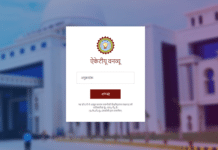Mind Games: Understanding the Psychology of Decision Making
Introduction
From selecting what to eat for breakfast to major life choices such as career paths or relationships, decision making is a central part of human nature. However, the process itself is multi-faceted and influenced by countless psychological elements that can sometimes mislead us. In this article we are going to take an in-depth look into decision psychology which involves studying those cognitive biases, heuristics and emotional factors that affect our decisions.
The Rational Decision-Making Model
According to traditional economic theory, people are rational actors who weigh up the costs and benefits involved with each alternative they face before deciding. This model assumes that individuals try their best to make logical decisions aimed at maximising utility through careful consideration. However, psychologists have found out through studies that human reasoning doesn’t work this way always.
Cognitive Biases
What is commonly referred to as cognitive bias in decision making psychology are actually patterns of errors in thinking leading to non-rational judgments systematically done over time. There exist many different types of cognitive biases which may impact on how we make choices; some examples include:
- Confirmation Bias: The pre-disposition to look for facts that back up our personal opinions while ignoring or undervaluing contradicting information.
- Availability Heuristic: This occurs when people overestimate the probability of an event because it is easy to recall from memory, often because it is particularly vivid or happened recently.
- Anchoring Bias: This happens when decisions are made based on initial suggestions (the “anchor”) even if they are irrelevant or misleading.
- Overconfidence Bias: Being too sure about their abilities or knowledge and therefore taking unnecessary risks or making poor choices.
Heuristics
Aside from cognitive biases, people also employ heuristics in decision making, which are mental shortcuts or rules of thumb that simplify this process. Though useful for fast choices, heuristics can cause mistakes and prejudices. The most common ones are:
- Representativeness Heuristic: Instead of considering objective probabilities we judge how much an event resembles our typical image of it.
- Availability Heuristic: We have already mentioned this heuristic earlier– estimating the likelihood of an event by its ease of recollection.
- Affect Heuristic: Tendency to make decisions based on our emotional responses to a situation, rather than objective analysis.
Psychological Factors Affecting Decision Making
We all know that our emotions play a part in decision making because they influence what we choose to do or not to do. Sometimes these effects are conscious, but often times this is not the case at all. Research has shown that:
- Decisions made under strong emotions: In situations where feelings become intense like when someone is anxious or excited, it becomes easier for such an individual to make impulsive decisions without thinking about them.
- Emotional context: The manner of presenting information can provoke different feelings which may then affect choices made. For instance one might decide to be more cautious if they think about losing something instead of gaining something else or vice versa.
- The place of intuition: Another emotional side of decision-making is gut instinct; however, sometimes it works well with emotions and at other times doesn’t work as expected due to biases and mistakes associated with emotions.
Decision-Making Practice
Knowing the many psychological aspects that come into play during decision-making helps us choose wisely both personally and professionally. If we understand our own mental prejudices and emotional reactions, then we can try so hard as possible not let them cloud judgement thereby making wrong decisions.Moreover, we can also communicate persuasively and get others to make decisions in our favor if we know how to package information properly.
Conclusion
The psychology of decision-making is an extensive area that involves various cognitive, affective, and social components. However, comprehending these factors can enable us to be more conscious decision-makers who understand better what they want from life and why they should or should not do something about it given the current context around them. Therefore, this knowledge is important for both individuals as well as leaders or policy makers since any decision made without considering these psychological foundations might lead to undesirable outcomes.
This article is an elaborate discussion about the psychology surrounding making choices; it touches on cognitive biases, heuristics, emotional influences and real-world applications across different situations where decisions need be made. The paper thus presents a holistic view into decision-making and equips readers with skills necessary for thinking more critically when faced with difficult options.
REFERENCES
- Kahneman, D., & Tversky, A. (1979). Prospect Theory: An Analysis of Decision under Risk. Econometrica, 47(2), 263–291. https://doi.org/10.2307/1914185
- Stanovich, K. E., & West, R. F. (2000). Individual Differences in Reasoning: Implications for the Rationality Debate? Behavioral and Brain Sciences, 23(5), 645–665. https://doi.org/10.1017/s0140525x00003435
BIOGRAPHICAL RESOURCES
- Daniel Kahneman: Nobel laureate in Economics, known for his work in behavioral economics and cognitive psychology.
- Keith E. Stanovich: Professor of Human Development and Applied Psychology at the University of Toronto, known for his research on rationality and cognitive biases.


























